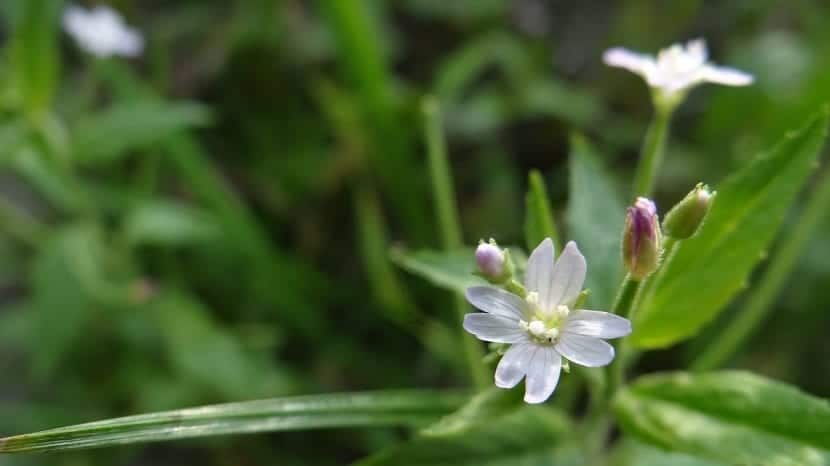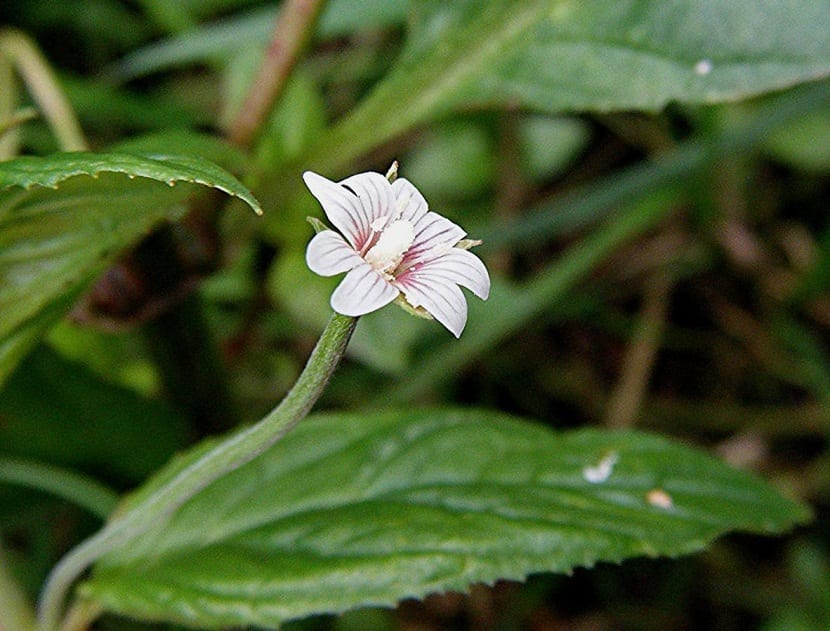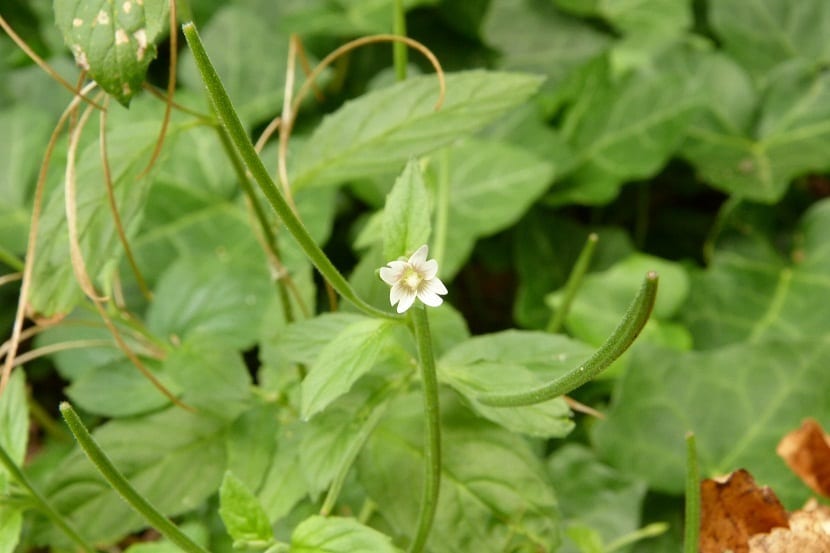
The Epilobium is a genus of annual herbaceous plant of about 200 species approximately that it has flowers with four petals and various colors such as red, pink, orange and yellow.
Belonging to the Onagraceae family native to the sub-arctic and temperate regions, grows on the banks of streams and high mountain streams. It was described by the Swedish botanist Carlos Linneo who mostly referred to it as a vegetable with alternate and reverse leaves with a lanceolate or ovate shape.
Features

The genus Epilobium roseum it is spread throughout Europe in a wild way, especially in territories of Hungary, the former Yugoslavia, Russia and Romania in whose lands there is a high content of silica and humus that allows their seeds to germinate and develop quickly.
Its fruit has an elongated and cylindrical receptacle that keeps its seeds inside covered by fine silk fluff, which serves to disperse. He observed some families that he considered garden weeds and food for Lepidoptera larvae such as mouse and goth moths respectively.
Its composition in all species, stands out for the presence of myricetol, quercetol and flavonoids, the latter coming from kenferol with high anti-inflammatory power. In it are present pectins, mucilages, ethereal oil, organic salts, derived from gallic and tannic acids, which together offer support to the environment and humans.
Epilobium roseum it is a perennial herb that blooms in autumn, with yellowish or reddish buds that cling to the stem, which branches upright in the upper part, with leaves that have marked secondary veins and bracts of glandular hairs.
Its flower buds are ellipsoidal and pink or white with brown seeds that take place from July to August.
It is known as Pink waterweed and there are two varieties called Epilobium hirsutum or St. Anthony's Grass and Epilobium angustifolium or Forest Epilobium, whose beautiful purple flowers adorn the mountains and bushes.
Uses
Until recently it was recommended that the tender shoots be cooked and consumed like asparagus but it was not appreciated as a medicinal plant, nowadays you can give it many uses.
To prevent the flu, cough and asthma. In fact, the European Medicines Agency (EMA) certified it for relieve urinary discomfort associated with benign hyperplasia prostate and bladder cancer.
Equally works for gastroenteritis treatmentsIn addition, the same agency indicated its usefulness as an astringent, antioxidant and antibacterial, in the healing of ulcers and skin wounds. Also in cases of gingivitis, pharyngitis or stomatitis, a gargle or rinse with tea is effective.
Release its dried leaves, flowers and stems have been commercialized for infusions, but you must be careful if you are a woman and suspect a pregnancy, you are breastfeeding, you are on contraceptive hormonal therapy or you are allergic (or) to the vegetable, you suffer from clotting problems as they are contraindicated.
Otherwise, we suggest you take them in extract, liquid concentrate or in capsules twice a day on an empty stomach and before going to bed, you will notice the results in a week. Despite its active benefits, the plant is still under-exploited.
Farming

We remind you that you should cut it if necessary to half a height so as not to damage it, so you will get it to grow again and be able to regenerate.
In summer you will have to water this plant regularly and so that it does not dry out. Make sure it has at least one small root formedThus you will be able to plant it immediately and see how its fruits are produced successively throughout the year.
It is immune to the cold, withstands temperatures of up to twenty degrees below zero and thrives on rhizomes.
If the annoying weed appears in your garden, carry out a fumigation with a concentration based on glyphosate, an organic herbicide for broad spectrum crops that when applied to its leaves directly eliminates the invasive species, controls its reproduction by preventing it from being damaged and you collaborate with nature by restoring its habitat.
If you are going to use it as a home remedy, consult your doctor beforehand, so you will avoid any unfavorable consequences and be cautious, keep it out of the reach of children and do not exceed the prescribed dose.
Weed Control in Medicinal Plants should always be manual or mechanical, Chemical Control should never be used, except Glyphosate.